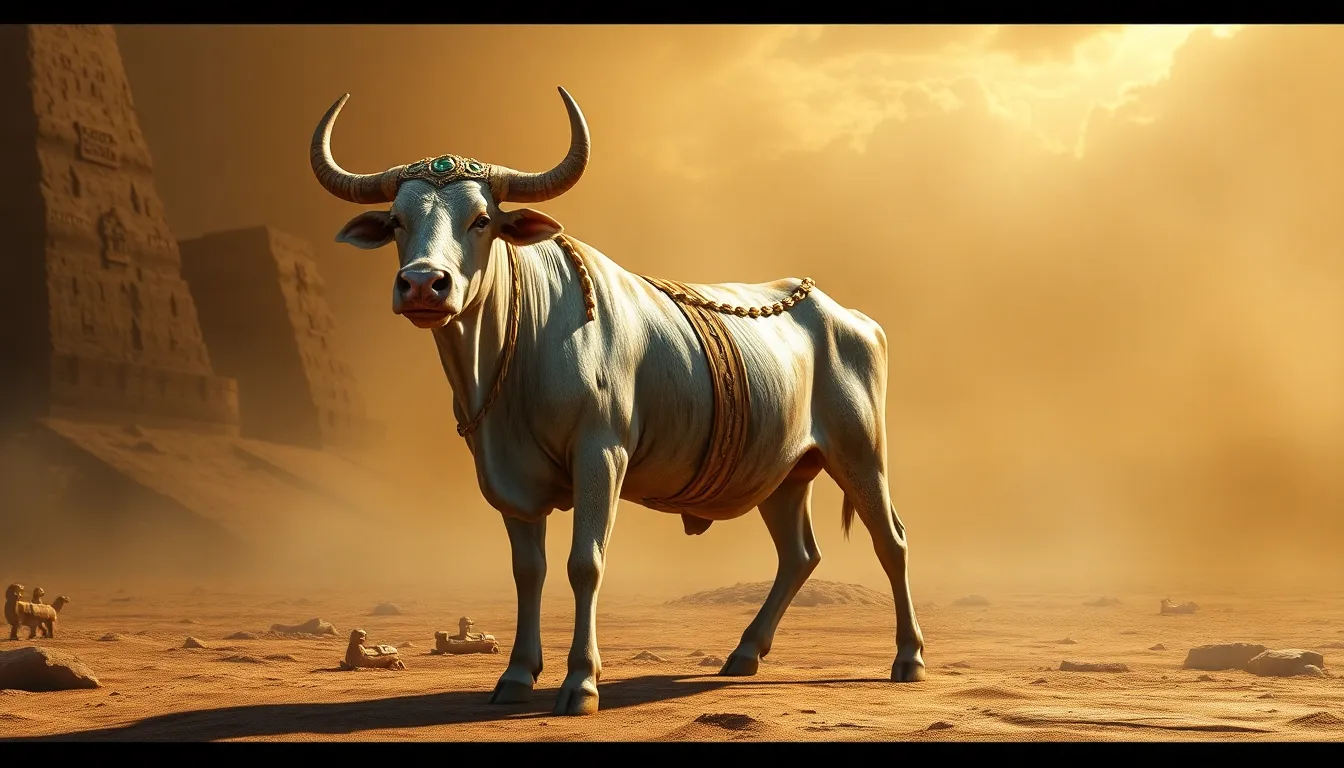The Spiritual Importance of the Sacred Cow in Egypt
I. Introduction
The sacred cow holds a prominent place in Egyptian culture, revered for its multifaceted symbolism and spiritual significance. In ancient Egypt, animals were not merely seen as living beings but were imbued with deep religious and cultural meanings. The cow, in particular, was a symbol of fertility, motherhood, and divine power, playing a crucial role in the spiritual landscape of ancient Egyptian society.
This article aims to explore the spiritual role of the sacred cow in Egypt, examining its historical context, mythological associations, rituals, artistic representations, and its enduring legacy in modern Egyptian spirituality.
II. Historical Context of Cattle in Ancient Egypt
Cattle were an integral part of ancient Egyptian society, serving various roles that extended beyond agricultural purposes. Their domestication marked a significant milestone in the development of Egyptian civilization.
- The domestication and roles of cattle: Cattle were primarily used for plowing fields, providing milk, and as a source of meat. Their strength made them essential for farming, which was the backbone of the Egyptian economy.
- Cattle as symbols of wealth and power: Ownership of cattle was a clear indicator of wealth and social status. Pharaohs and nobles often displayed their herds as a testament to their prosperity.
- The evolution of the sacred cow: Over time, certain cows came to be regarded as sacred, particularly those associated with deities and religious practices.
III. The Sacred Cow in Egyptian Mythology
The sacred cow is deeply woven into the fabric of Egyptian mythology, particularly through the deities Hathor and Apis.
- Major deities associated with cows:
- Hathor: The goddess of love, beauty, and motherhood, often depicted as a cow or a woman with cow horns. She was believed to embody the nurturing aspects of motherhood.
- Apis: A sacred bull worshipped in Memphis, considered a manifestation of the god Ptah. Apis was associated with fertility and was thought to carry the souls of the dead to the afterlife.
- The symbolism of the cow in creation myths: Cows were often seen as symbols of creation and fertility, with myths suggesting that the universe itself was born from a primordial cow.
- The cow as a maternal figure: The nurturing characteristics of cows made them symbols of maternal care, reflecting the protective and life-giving qualities of motherhood.
IV. Rituals and Worship Surrounding the Sacred Cow
Religious practices involving cows were common in ancient Egypt, highlighting their significance in rituals and worship.
- Religious practices: Cows were often featured in temple rituals, where they were honored as divine beings. Priests conducted ceremonies to venerate the sacred cows, treating them with great reverence.
- Festival celebrations: One of the most notable festivals was the Feast of the Sacred Cow, where communities gathered to celebrate and honor the divine aspects of the cow, often involving music, dance, and offerings.
- Offerings and sacrifices: Cattle were sometimes offered as sacrifices to appease the gods or to seek blessings, reinforcing their role as intermediaries between the divine and human realms.
V. The Sacred Cow in Art and Iconography
The representation of cows in ancient Egyptian art is rich and varied, reflecting their spiritual significance.
- Depictions of cows: Cows were frequently depicted in murals, sculptures, and carvings, often alongside deities or in scenes of abundance and fertility.
- Significance in tombs and temples: Imagery of cows in tombs was meant to ensure a prosperous afterlife, while in temples, cow imagery served as a reminder of the divine presence.
- Artistic representations: Divine cows, such as those representing Hathor and Apis, were often adorned with jewels and symbols of divinity, emphasizing their sacred nature.
VI. The Spiritual Symbolism of Cows in Egyptian Culture
The spiritual symbolism of cows in Egyptian culture extends beyond their physical attributes, embodying complex ideas about life, death, and nourishment.
- The cow as a symbol of fertility and nourishment: Cows were associated with agricultural abundance, representing the fertility of the land and the sustenance of the people.
- The connection between cows and the afterlife: Cows were believed to assist the deceased in their journey to the afterlife, with certain rituals involving cows intended to ensure safe passage.
- The duality of life and death: The sacred cow encapsulates the duality of existence, representing both life-giving properties and a connection to the afterlife, highlighting the cyclical nature of life.
VII. The Legacy of the Sacred Cow in Modern Egypt
Even in contemporary Egypt, the sacred cow retains significance, reflecting a blend of ancient traditions and modern beliefs.
- Continuing cultural practices: Many rural communities continue to honor the cow’s role in agriculture, viewing it as a vital part of their livelihood and heritage.
- The role in contemporary spirituality: While the worship of cows may not be as formalized as in ancient times, the cultural reverence for cows persists, often seen in local festivals and agricultural practices.
- Influence on modern religious expressions: The sacred cow’s imagery and symbolism can still be found in various forms of art, literature, and religious practices, demonstrating its lasting impact on Egyptian culture.
VIII. Conclusion
The sacred cow holds a profound spiritual significance in Egypt, representing fertility, motherhood, and the interconnectedness of life and death. From its historical context to its mythological associations and artistic representations, the cow’s role in Egyptian spirituality is a testament to the rich cultural heritage of ancient Egypt.
As we reflect on the importance of preserving this cultural heritage, it becomes clear that the legacy of the sacred cow continues to influence modern Egyptian spirituality and identity. The enduring reverence for the sacred cow serves as a reminder of the deep-rooted beliefs that shaped the ancient world and continue to resonate today.




